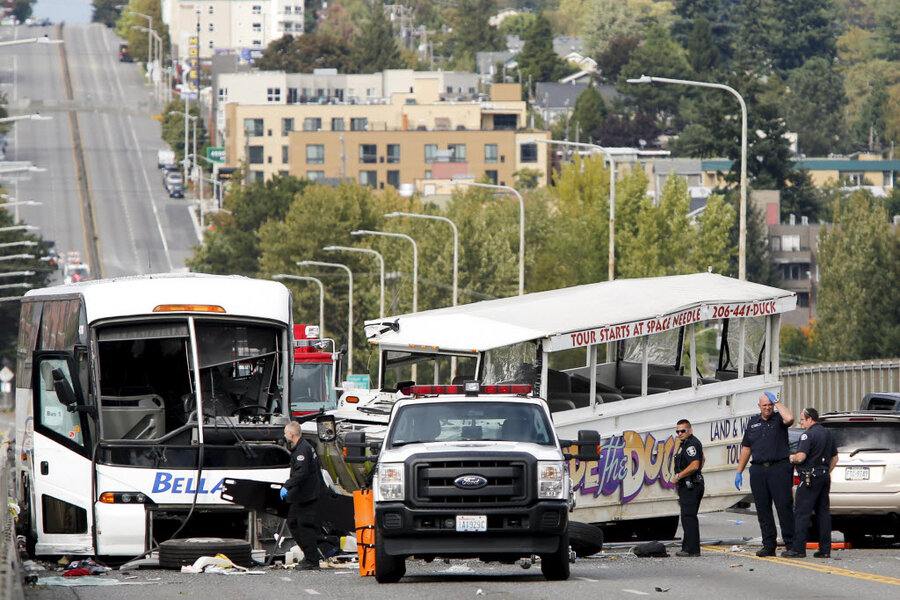What happened in deadly Seattle duck boat, charter bus crash?
Loading...
Investigators are looking into a crash between a charter bus and amphibious tour vehicle Friday.
The bus and the amphibious vehicle collided on Thursday on State Road 99 in Seattle. Early reports placed the casualty numbers at two dead and nine critically injured. Seattle Fire Chief Harold Scoggins later revised the number at a press conference as four dead and 12 critically injured.
The crash occurred on a bridge over Lake Union Thursday morning. Not much is known about how the crash occurred, but eyewitness accounts say the amphibious vehicle swung out into incoming traffic and collided with the bus.
Brad Volm, who was driving behind the amphibious vehicle, says the duck boat swerved in front of him and into the incoming charter bus. Mr. Volm says it appeared the amphibious vehicle's front left tire locked up.
Fire and police officials have not described the chain of events leading up to the crash.
Students and staff from North Seattle College occupied the charter bus during the time of the crash. Many of the students were international students on their way to new-student orientation. North Seattle College reported that four of the dead were international students and government officials were working to contact family members.
Rujia Xie, a 16-year-old from China, was a student on the bus. "We didn't see anything. Just the sound. The smell of gas, " she told The Associated Press.
The amphibious tour vehicle was operated by a tour company called “Ride the Ducks.” Brian Tracey, president of Ride the Ducks, told The Seattle Times, “all I care about is the safety of the passengers and the people who were injured on the duck.” He reported that the company continually trains drivers and staff and conducts onging education classes. The company has voluntarily taken their vehicles off city streets following the accident.
Mr. Tracey says there were 36 people on the amphibious vehicle and the driver has a Coast Guard license and a commercial driving license.
Seattle Mayor Ed Murray told the AP the National Transportation Safety Board is taking control of the investigation into the crash. Federal investigators are set to arrive Friday.
This report contains material from the Associated Press.






